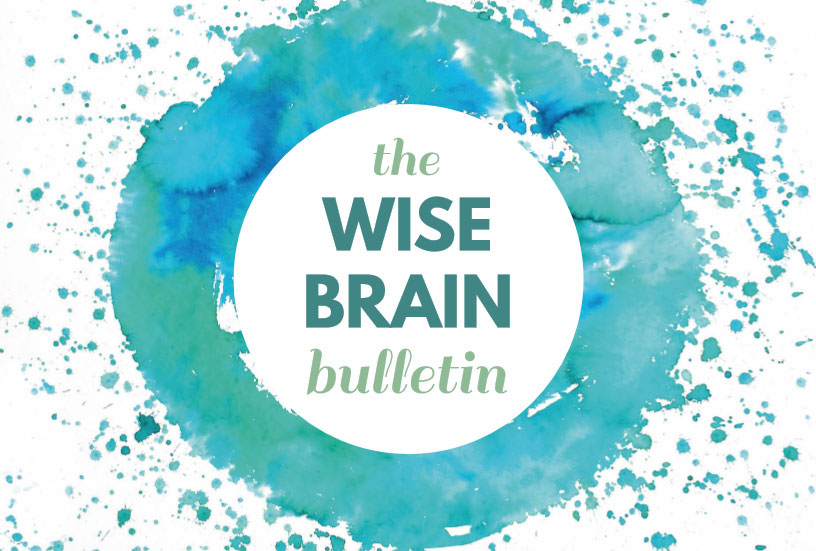News and Tools for
Happiness, Love, and Wisdom
volume 13.5 • 2019
In This Issue
Inquiring Deeply into Emotional Equanimity
© 2019 Marjorie Schuman, Ph.D.
If equanimity is the answer, what is the question?
It is sometimes said that “insight begins with bad news.” While I would never be one to recommend pasting a happy face on whatever may be happening, I am nonetheless frequently struck by the fact that what is emotionally painful often winds up contributing great value to my life. For this reason, painful psychological events have become a special point of focus in my practice of mindful awareness. I make it a point to continually “inquire deeply” into my emotions, feelings, and moods. To me, such deep self-inquiry and self-reflection are a creative variation of mindfulness/ awareness practice. I sometimes call it “practicing with problems,” since there always seems to be some emotionally-laden situation which comes forward as a “problem du jour.”
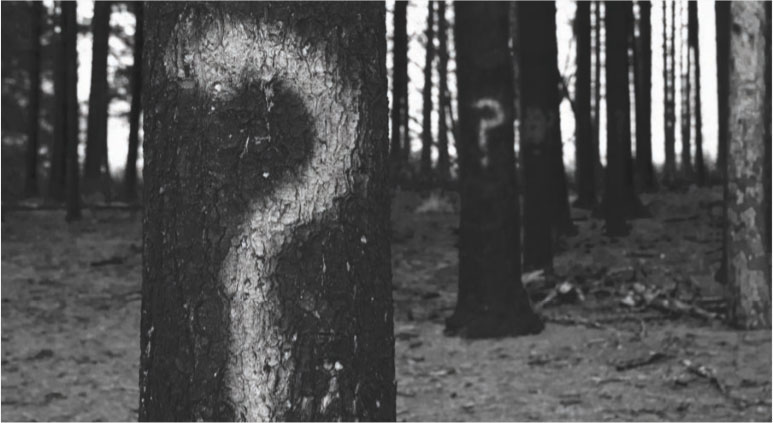
The reflections presented in this essay have come about during the process of my own inquiries about equanimity over several decades. My observations and conclusions are grounded in my dedicated practice of Buddhist mindfulness meditation as well as extensive professional clinical experience as a psychologist and psychoanalyst. In the process of investigating my own emotional experience, I have organically developed a way of using the method of deep inquiry to unpack psychological issues and problems and, in so doing, to cultivate emotional balance. I call it “Inquiring Deeply” (Schuman, 2017). It is a method suited both to self inquiry and to psychotherapy.
Equanimity may be defined as the ability to maintain mental and emotional stability in the midst of whatever may be happening. Challenges to equanimity arise from all manner of circumstances: misfortunes, losses, and traumas (sometimes ‘positive’ things as well). Here, my primary purpose will be to show how we can use the method of Inquiring Deeply (inquiry and mindful self-reflection) to develop a deeper and wiser understanding of our emotional lives.
The Frame of Practice: Inquiry Deeply Defined
What is inquiry and what does it show us about emotional equanimity?
“Inquiry” means to live in the question of something, on and off the cushion; to consciously engage experience in an ongoing way which invites it to unfold. We Inquire Deeply into emotional experience simply by asking ourselves basic questions such as “what am I feeling?” and then “what is underneath that?”. This is not intellectual analysis, but rather an effort to see emotional reality clearly, just as it is.
Inquiry can be general, using open-ended questions such as the ones just mentioned, or it can be used to explore a particular emotion, challenging situation, or difficult relationship. For example, we may inquire into a specific experience that is occurring in the moment (such as “What am I reacting to right now?” or “Why am I uncomfortable with this person?”), or maybe questions of a more general nature about something problematic (such as “What is making me unhappy?” or “Why don’t I have the love I want?”). Inquiry is an ongoing process of bringing conscious attention and self-reflective awareness not only to the felt experience of the present mindful moment, but also to the meaning we are giving to things. It is a process which unfolds in its own way as a function of intuitive wisdom.
One of the first things we discover as we engage in deep inquiry about equanimity is that the mind is often not very equanimous. Indeed, emotional upset can be the rule rather than the exception in human life. Emotions, feelings, and mood are the internal weather of the mind: capricious and subject to as many changes and variations as meteorological conditions. Though emotional weather is fundamentally beyond our control, we do have at least some choice in how we relate to those experiences, and in so doing we can cultivate equanimity.
Bringing attention to equanimity has the immediate effect of highlighting areas of emotional challenge. As a general principle, this seems analogous to what happens when engaging in mindfulness meditation. Hindrances to meditation arise, and it is the very awareness of those obstacles that helps us learn to discern states of relaxation and calm.
The felt sense of equanimity is something which will probably be familiar to most readers who practice Buddhist meditation. The basic posture or attitude of mind is the intention to lean into and relax with the present moment of experience. We pause and intentionally notice what we are feeling. Equanimous mind states which arise during meditation practice show us what a calm and grounded sense of psychological center in the present moment feels like. This then can provide a proverbial North Star for navigating our emotional lives with balance. Such moments provide a refuge from the emotional turbulence that may be occurring; a respite and an opportunity to soothe ourselves.
However, it is more helpful to think of equanimity as a practice rather than as a particular state of mind. It may be difficult or impossible to soothe ourselves in some moments, and in any event emotional equanimity entails much more than the ability to feel serene in the here and now. Most fundamentally, equanimity is about how we relate to our feelings. It is about opening to and being with our emotional reactions; the commitment to meet painful emotions with awareness.
We can also understand emotional equanimity in relation to its opposite, reactivity. Emotional reactivity means the tendency to be easily triggered (such as having a ‘short fuse’ with anger). We describe someone as reactive when we judge that they too easily “get their buttons pushed”;

when their emotional responses tend to seem uncontrolled, labile or out of proportion to the circumstances, or when their emotional comfort zone appears small. Whereas emotional reactions are a normal part of being human, reactivity can be deemed to be a problem.
People vary greatly in in the intensity, range, and nuance of their emotional sensations. They vary not only in how reactive they are, but also in how expressive they are in communicating their reactivity, and in how consolable they are when upset. Recognizing, understanding, and managing emotions are important and interrelated capacities of emotional intelligence. Equanimity as a practice cultivates each of these capacities.
It is important to recognize that maintaining emotional equilibrium is not a simple technique but rather a multifaceted psychological function (called “affect regulation” in clinical parlance.) Equanimity lives in multiple layers of both body and mind, including innate temperament, biochemistry, and early trauma history. Except perhaps for the lucky few people who were effectively parented in early life, emotional equanimity requires a lot of inner work.
As is often said, the more we can be mindfully present with what is happening, the better able we are to respond rather than to react. Even when we are not calm in a particular moment, we can endeavor to “self-remember” and self-reflect on our reactions. Sometimes it may only be after the fact, in a more balanced state of mind, that we remember to reflect on how we have reacted. Retrospective self-reflection is an important component of equanimity practice. It is an opportunity to remind ourselves of prior intentions or formulate new ones.
It is important to emphasize that Inquiring Deeply into emotional experience does not aim itself towards attaining an ideal state in which we will transcend painful emotional reactions. Instead, deep inquiry about equanimity as described here is an awareness practice, one which reveals an ever-deepening psychological landscape. Analogous to physical balance, this practice seeks to to hold our experience in a space of awareness which can facilitate the regaining of emotional composure.
Towards "Deep Emotional Understanding"
What am I feeling, and what triggered it? What am I resisting? Who is doing what to whom? What is at stake?
Inquiry about emotional experience begins with the premise that there is wisdom in problems. Analogous to pain in the body, emotional pain is useful. It wakes us up to what we need to see. It provides opportunities to deepen our emotional understanding both of self and other.
The practice of inquiring deeply into an emotional reaction begins with awareness of being upset and with the general intention to discover “What is this feeling telling me?” We turn towards our embodied experience, recognize what we are feeling, and invite our emotions to reveal themselves. Bottom line, we try to understand our experience by consciously feeling our way into it. I often liken this process to locating a splinter: first we have to probe the inflammation to find out what is sharp and psychologically painful.
When we inquire deeply about our emotional reactions, very often we discover that the trigger is what other people have said or done (or not said/ not done) and the meaning we have assigned to those things. These reactions are grounded in emotional patterns and, fundamentally, in the structure of our personalities. Although it is possible to experience moments of equanimity without investigating these deeper meanings, emotional stability is best achieved when we can see our patterns clearly. Not only do we gain a window of view into how relational events orchestrate our emotional lives, we begin to see that our minds are actually organized around our connections with others.

The Wellspring Institute For Neuroscience and Contemplative Wisdom
The Institute is a 501c3 non-profit corporation, and it publishes the Wise Brain Bulletin . The Wellspring Institute gathers, organizes, and freely offers information and methods – supported by brain science and the contemplative disciplines – for greater happiness, love, effectiveness, and wisdom. For more information about the Institute, please go to http://www.wisebrain.org/wellspring-institute.
If you enjoy receiving the Wise Brain Bulletin, please consider making a tax-deductible donation to the Wellspring Institute. Simply visit WiseBrain.org and click on the Donate button. We thank you
What is often insufficiently recognized is that many emotions are inherently inchoate. Early nonverbal experience tends to be unformed and may not be readily expressed in words! To get the messages conveyed by our emotions, we need to be sensitive to their idiom of expression, and to develop an understanding of how they function within us. Deeper knowledge surfaces when we open to what is expressed in body sensation and images, metaphors and narratives.
Trying to discern why she was feeling depressed, a woman found herself with an unexpected image of Londoners in World War II sending their children off to relatives in the countryside. As she reflected on what this image was telling her, she realized that her depression was providing a zone of emotional safety, a respite from the bruising forces in her daily life.
Ultimately, working through emotion involves acceptance, release, and letting go. This is not something that happens all at once or in a flash of insight. It requires, instead, an attitude of gentleness with ourselves; a receptive and compassionate presence that allows us to drop down into deeper levels of our experience. It is not something that we can ‘do’ but rather a capacity that we must cultivate.
It is helpful, too, to develop a sensitivity to the felt sense of struggle and resistance. Struggling with experience is a good indicator that something has unresolved (unfelt) feelings at its core which need attention. Simply put, it is important to pay attention not only to what we are feeling, but also what we may be resisting feeling. We can notice the truth that “what we resist, persists.” When we are up tight about what is happening, we can pay attention to the judgments we have about ourselves and others. We can notice how resistance fuels an ongoing cycle of reactivity and contributes to emotional turbulence; and conversely, we can notice that release happens of its own accord when we allow things to be as they are.
Emotional Experience, Deep Inquiry, and Personal Growth
What is the problem? What opportunities does it contain? What is my intention? What is my heart’s longing?
Inquiry is a process. Perhaps the best way I can convey the nature of how it unfolds will be for me to describe the sequence of my personal experiences in this extended self-inquiry about equanimity.
Among the most salient of the hindrances to my own equanimity that came to light during this inquiry had to do with anxieties that arose for me in the process of writing. For example, I found that sharing drafts of the manuscript with friends and colleagues was something of an emotional roller coaster. On the one hand, positive responses felt very rewarding; on the other hand, criticisms of my writing - even when I agreed with them - felt like puncture wounds to the skin of my professional “self.” It was clear to me that I was highly invested in feedback about my writing and that sensitivity to approval/disapproval lives very close to the surface of my psyche.
The top layers of this emotional reaction were quite obvious. I was invested in writing a good paper; just beneath that, being seen as a good writer; beneath that, being impressively smart. Typical of psychological knots which present themselves as afflictive emotions, my “issue” was organized in layers which revealed themselves as I repeatedly asked myself the question “and what is underneath that?”.

As I further probed into my emotional reactions, their childhood origin was abundantly clear. My “identity” in life was constructed around expectations in my family of origin that I should become someone who knows. This part of my personality appeared when I was quite young, and was strongly reinforced during my experiences in school. I was highly motivated to perform well.
But, there were costs connected with the need to perform. To mention only one of several, on more than one occasion I was subject to what felt like envious attacks by others. This left me always on guard against being “shot down,” and I have gone to great lengths in my adult life to avoid that experience of vulnerability. No wonder that publishing my work was reactivating for me!
As I felt my way into this “problem,” what surprised me the most was discovering that my writing style itself expressed a posture of defense! Rather than making simple assertive statements of my point of view, I saw that I tended to pad sentences with unnecessary qualifying phrases such as “in my view” or “in my opinion,” which I now saw as very transparent efforts to protect myself from attack. In seeing all of this, this layer of defense dropped away and a new written voice began to emerge.
There were other levels of insights as well. The teeter-totter of the wish to be seen and the fear of being seen were quite familiar to me as a psychotherapist, but now my experience of this dynamic seemed to deepen. For example, I could see clearly that this core psychological conflict was embedded in my choice to become a teacher and a writer.
Most importantly, as I recognized more deeply than ever before how much the need to be smart has gotten in my way in life, I also had a deep insight into the Buddhist truth that the root cause of this suffering was my identification with this image of myself (“selfing”). This was not a new understanding, but it came alive during this inquiry. What I saw was that professional writing is one of the principal means I enlist in support of my sense of self, and that this “clinging,” as the Buddha would have termed it, was causing me a lot of pain. I saw clearly how I get caught up in becoming, and the angst connected to that. My personal mantra became “no-one to become!”
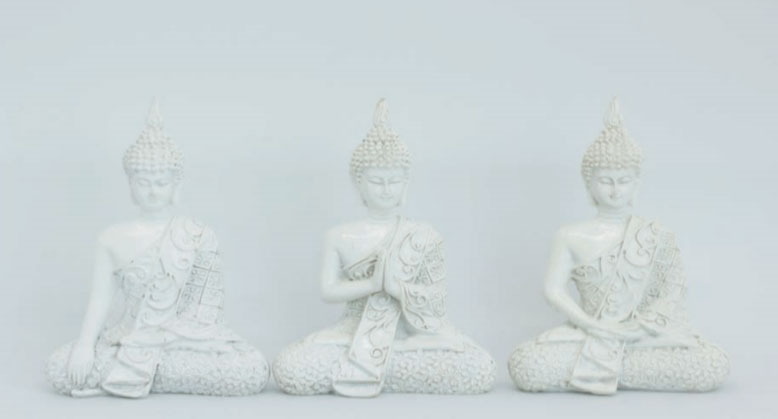
Although I cannot honestly claim that any personality wounds were “healed” as a function of this inquiry (much less that I was “liberated” in the process), I can report that the way this process unfolded validates my ideas about deep self-inquiry. Inquiry has an inherent wisdom which unfolds into insight, and emotional integration is an important by-product. For me, this was demonstrated in the new written voice that emerged, as well as in parallel developments marked by a greater sense of comfort being in my own skin. I see this as “working through” in action. It affirms within my own experience that there is great opportunity for growth available in this kind of self-inquiry, and it is this freedom that is what my heart most longs for.
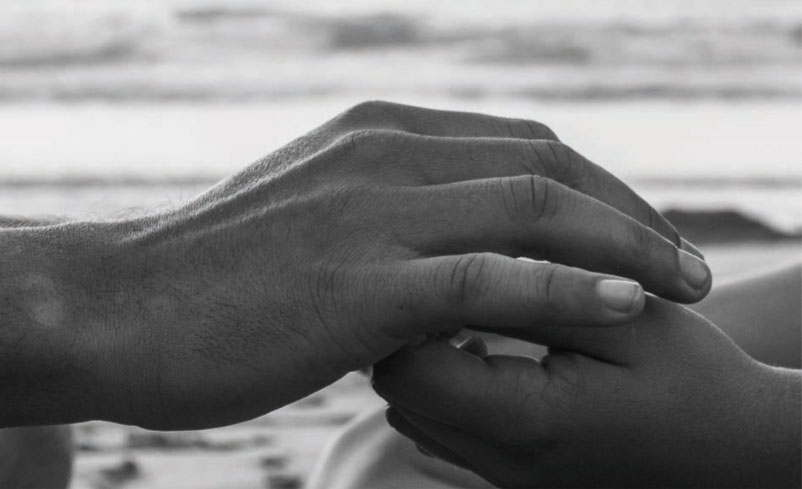
Summary and Conclusion
Inquiry and the wise understanding of emotion.
My major intention in writing this essay has been to bring conceptual clarity to the idea of emotional equanimity. I have wanted to convey the value of deep self-inquiry both as an awareness practice and as a way of being with one’s emotional life. And, most importantly, I have wanted to articulate some of my conclusions regarding the wise understanding of emotion.
In contrast to Buddhist teachings which focus on training the mind in order to subdue or master emotion, emotional equanimity as discussed in this essay does not imply attaining a mental state characterized by the quiescence of distressing emotions. Instead, it is seen as a practice, a process which endeavors to harness the wisdom contained in our emotions in order integrate them into the psyche. This does not imply that we should be passive in the face of pain, but rather that we need to be clear about the messages contained within our emotions so that we can take appropriate actions and make wiser choices. Cultivating emotional equanimity in this sense means learning to use our emotional challenges as opportunities for growth.
The practice of deep inquiry, as I conceive it, is based in the existential premise, beautifully articulated by the psychiatrist Viktor Frankl4, that one of the most important things human beings can do, regardless of their circumstances, is to consciously find – create - meaning in what is happening.
Posing an inquiry question to oneself is a powerful act in and of itself. Inquiry frames and constructs an intentional matrix of meaning around experience. As such, inquiry can serve as a kind of psychospiritual exoskeleton to support growth and the emergence of new experience. It frames the intention to consciously develop emotional intelligence; to grow with and from awareness of emotional life. In this way, inquiry provides a way to exercise conscious ownership of psychological growth and transformation.
In the everyday reality of our psychological worlds, there is much that can be learned by paying attention to feelings. Bottom line, our feelings reveal what we are unwisely holding onto and where we need to grow. Finding the wisdom in these experiences is beautifully expressed in the metaphor of a lotus in a pond, its roots in the mud below, its flower orienting towards the light above.
No mud, no lotus.
ABOUT THE AUTHOR
 Marjorie Schuman, PhD is a clinical psychologist and certified psychoanalyst with four decades of Vipassana meditation experience. She teaches and does clinical consultation with a focus on deep inquiry and mindfulness-informed psychotherapy. A member of the faculty at the Los Angeles Institute and Society for Psychoanalytic Studies and at Pacifica Graduate Institute, Marjorie is the author of Mindfulness-Informed Relational Psychotherapy and Psychoanalysis: Inquiring Deeply (Routledge Press, 2017), and the monthly Inquiring Deeply Newsletter which contains probing commentary about mindfulness and psychotherapy.
Marjorie Schuman, PhD is a clinical psychologist and certified psychoanalyst with four decades of Vipassana meditation experience. She teaches and does clinical consultation with a focus on deep inquiry and mindfulness-informed psychotherapy. A member of the faculty at the Los Angeles Institute and Society for Psychoanalytic Studies and at Pacifica Graduate Institute, Marjorie is the author of Mindfulness-Informed Relational Psychotherapy and Psychoanalysis: Inquiring Deeply (Routledge Press, 2017), and the monthly Inquiring Deeply Newsletter which contains probing commentary about mindfulness and psychotherapy.
References
Damasio, A. 2000. The Feeling of What Happens: Body and Emotion in the Making of Consciousness. Boston: Mariner Books.
McLaren, K. 2010. The Language of Emotions. Boulder: Sounds True Press.
Frankl, V.E. 1959; 2006. Man’s Search for Meaning. Boston: Beacon Press.
Goleman (ed). 2003. Destructive Emotions: How Can We Overcome Them? A Scientific Dialogue With the Dalai Lama. New York: Bantam Books.
Schuman, M. 2017. Mindfulness-Informed Relational Psychotherapy and Psychoanalysis: Inquiring Deeply. London and New York: Routledge Press.

Morning Meditation
© 2017 Jeanie Greensfelder
I leave color and form,
enter darkness and find my mind’s
blackboard scribbled with to-do lists.
The refrigerator hums, my heart drums,
and I wonder
if I’m doing it right.
I seek solace yet feel
alone. My critic
rushes forward
and fills the emptiness.
Breathing through thought after thought,
judging and comparing voices wane.
In acceptance,
I smile at life, at my critic,
and at my blackboard.
ABOUT THE AUTHOR
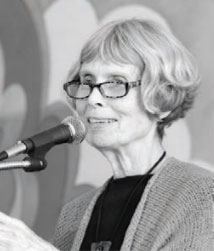 Jeanie Greensfelder is a retired psychologist. She served as the San Luis Obispo County poet laureate for 2 years in 2017 and 2018. A volunteer at Hospice of San Luis Obispo, CA, she does bereavement counseling. Her books are Biting the Apple, Marriage and Other Leaps of Faith, and I Got What I Came For. Her poem, “First Love,” was featured on Garrison Keillor’s Writers’ Almanac. Other poems are at American Life in Poetry, in anthologies, and in journals. She seeks to understand herself and others on this shared journey, filled, as Joseph Campbell wrote, with sorrowful joys and joyful sorrows. View more poems at jeaniegreensfelder.com.
Jeanie Greensfelder is a retired psychologist. She served as the San Luis Obispo County poet laureate for 2 years in 2017 and 2018. A volunteer at Hospice of San Luis Obispo, CA, she does bereavement counseling. Her books are Biting the Apple, Marriage and Other Leaps of Faith, and I Got What I Came For. Her poem, “First Love,” was featured on Garrison Keillor’s Writers’ Almanac. Other poems are at American Life in Poetry, in anthologies, and in journals. She seeks to understand herself and others on this shared journey, filled, as Joseph Campbell wrote, with sorrowful joys and joyful sorrows. View more poems at jeaniegreensfelder.com.

Self-Compassion in Daily Life
Adapted from Self-Compassion for Parents: Nurture Your Child by Caring for Yourself;
reprinted with permission from Guilford Press
© 2019 Susan Pollak, MTS, EdD
Out of Gas
It was one of those mornings. The baby hadn’t slept, Amy’s husband was out of town, and three-year-old Sophie insisted on wearing her new tutu to nursery school as snowflakes began to pile up on the New England January morning. Plus, they were late. Of course, they were late. Amy had time to feed the kids, but no time to feed herself.
“I don’t care,” Sophie retorted and resumed pirouettes.
Amy was in no mood for a fight. “Honey, we’re late,” she pleaded, her voice rising.
“We’re late, we’re late,” Sophie mocked, imitating her high-pitched voice.
“Enough, no backtalk, we are going. NOW. Put on that jacket,” Amy said, trying to sound firm but calm, as all the good parenting books recommend.
“You can’t make me, you can’t make me,” Sophie chanted in a singsong. She gave up the dance and plopped down defiantly and stuck out her tongue.
Amy was furious. “Enough! I’ve had it,” she yelled, picking up both kids and dragging them to the car, jackets spilling out of her hands. Opening the door one handed to get the baby in, she tossed Sophie her jacket. Sophie immediately sensed a new stand she could take with her mother’s conviction and compassion waning and rage seething: she promptly refused.
“You’re not the boss of me,” Sophie taunted.
“You can just freeze, see if I care,” Amy retorted as she buckled both kids into their car seats and sped off.
Sophie started to wail, and then the baby joined in.
“Stop it now,” Amy hissed, feeling overwhelmed and helpless. Clearly this was not one of her finer moments in parenting.
“I want my daddy,” Sofie cried. “He isn’t a meanie like you.”
It was a relief, for everyone, to get to school. The teacher was understanding as she greeted them, wiped Sophie’s tears, and led her inside with a sympathetic smile to Amy. Within minutes Sophie was coloring and laughing with her classmates.
Amy left, shamefacedly waving goodbye and feeling like a terrible mother. While Sophie had moved on, Amy’s anger boomeranged as hot shame, guilt. and regret. She began to berate herself, saying, “I really suck at this. I’m an awful mother.”
As she was driving home, the car began to sputter and spurt, then finally stopped. “Oh shit,” she thought. Tom, her husband, usually filled up the car, but with him out of town she hadn’t even remembered to check the tank, which was, of course, empty.
Amy sighed, packed the baby in his carrier, and started to walk to a gas station. The snow was coming down harder now. “Great, just what I goddamned need,” she thought as she began to cry. She surprised herself with the intensity of her sobs. “How am I going to do this? How can I get through the next 15 years without driving myself and the kids crazy?”
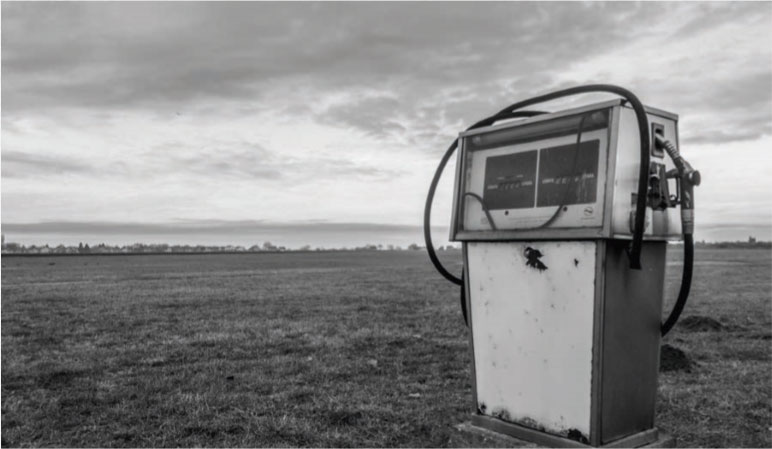
It’s Hard for Everyone
Maybe your very bad, no good, terrible day wasn’t as dramatic as Amy’s, or maybe it was worse. Hungry, angry, lonely, and tired, we’ve all run out of gas, or worse. Life is hard for everyone, but especially hard when family is far, and the village that it’s supposed to take seems full of idiots or friends that don't have the time for us. It is so easy to run out of gas, whether we are parents or not. So how can we gas up and not lock up the brakes? Mindfulness and self-compassion both offer ways to help restore our well-being.
“Replenishment,” you scoff. “What about anger management? Or Xanax? How about a double Martini?”
Greetings
The Wise Brain Bulletin offers skillful means from brain science and contemplative practice – to nurture your brain for the benefit of yourself and everyone you touch.
The Bulletin is offered freely, and you are welcome to share it with others. Past issues are posted at http://www.wisebrain.org/tools/wise-brain-bulletin.
Rick Hanson, PhD, edits the Bulletin. Michelle Keane is its managing editor, and it’s designed and laid out by the design team at Content Strategy Online.
To subscribe, go to http://www.wisebrain.org/tools/wise-brain-bulletin.
I get it. We’ve all been there. But what I hope to convey is that it is easier to manage your anger, take responsibility, keep your mood steady while you are taking care of yourself. The writer Audre Lorde put it succinctly, stating that caring for oneself is not self-indulgence but self-preservation.
Offering yourself mindfulness and compassion isn’t about giving yourself free rein to be lazy, to shirk responsibility, or to sit on a cushion and contemplate your navel. It’s not about being soft on ourselves. On the contrary, mindfulness helps us see clearly and act from a place of kindness and wisdom. In fact, one definition of mindfulness is “clear seeing.”
In fact, self-criticism rarely works. Kristin Neff, a pioneering researcher of self-compassion, has written extensively about this. Motivating ourselves with kindness and compassion is actually more effective than using criticism. “Yeah, sure, more stupid psychobabble,” you protest. Hold on. These ideas are impacting the business sector as well. Charles Schwab, financial leader and philanthropist, wrote, “I have yet to find the man, however exalted his station, who did not do better work and put forth greater efforts under a spirit of approval than under a spirit of criticism.”
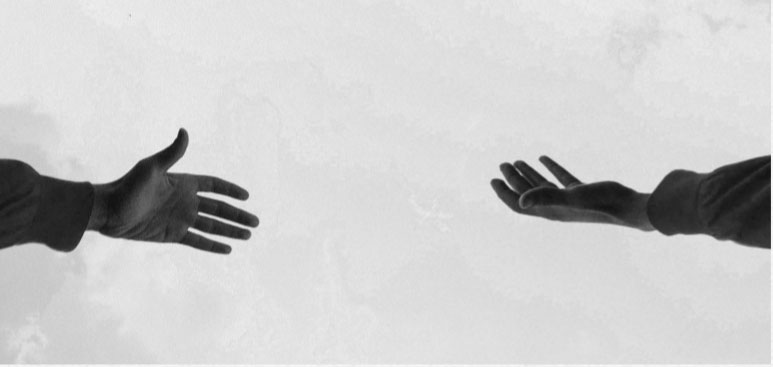
Let’s illustrate this by returning to Amy, who consulted with me not for therapy but for “sanity” as she put it. “I don’t need therapy,” she protested, “but I do need support. I don’t know what I’m doing, my parents and my sisters, who also have young kids, are two flights away, I have no help, and I don’t want to push away the new parent friends I am just barely making.”
As we talked more, Amy’s story unfolded. She had moved to the East Coast for her husband’s job, leaving behind friends and family. “People are cold here, just like the weather,” she said sadly. “And everyone looks so together. I feel like such a mess.” She began to cry. “We moved here for Tom’s job--not that he’s ever here; they have him traveling twice a month. And when he gets home, he’s exhausted and hungry and wants the kids to be all fun and the house to be all clean, and he forgets the house isn’t a hotel room and doesn’t have daily maid service . . .” She paused and drew a breath. “It just isn’t happening.”
She was silent for a moment. “I’m taking care of everyone, I’m not sleeping, I’m lonely, eating the kids’ leftovers because I gained so much weight, but now I’m hungry most of the time. Sometimes I feel I’m going so fast that I’m barely breathing. But what is scariest is that I feel that I’m losing myself and my brain is just mush. I’ve lost my old competent self. No one is taking care of me. I need some help and I need it now. That horrible morning, when I ran out of gas and had to walk to a station in the snow, I saw the sign that said ‘Full Service,’ and I wondered, will I ever feel full again? Am I always going to feel depleted?”
I introduced the following practice, inspired by Christopher Germer’s The Mindful Path to Self-Compassion (2009), which Amy did when she woke up in the morning. This is a great place to start. I know that you’re busy and don’t have free time. Don’t worry. Set a timer; it takes only three minutes. (Don’t tell me you don’t have three minutes).
Tending to Yourself
- Take a moment and find a comfortable seat.
- Let yourself settle for a few moments.
- Find your breath. Sometimes we are so busy we don’t realize that we’re breathing. Where is it? Where do you most notice the sensation of breathing? Focus there and feel the breath move in and out.
- Let yourself feel one breath fully.
- Ask yourself, How do I know that I’m breathing?
- Notice any sensations in your body.
- What are you noticing? Are you hungry? Tired? What emotions are you aware of? What are you feeling?
- Let yourself be gently rocked and held by each in breath and each out breath.
- Let the inhalation and exhalation soothe and comfort you, anchor you.
- If you like, put a hand on your chest or a hand on your chest and belly.
- Feel the comfort of your warm touch.
- Let yourself take 10 breaths. Yes, you have time for 10 breaths. You are breathing anyway.
- Give yourself permission to tend to yourself, to be kind to yourself. You spend so much time taking care of others, attending to their needs. Take a moment. What do you need?
- Give yourself permission to eat, to shower, to rest, to stop and breathe.

Amy tried this for a few weeks. Some days all she could manage was five breaths, but even that seemed to help. Even though this seemed so simple, she felt that it grounded her.
“Sometimes I’m so frantic that I forget to eat or don’t have time to shower. I was running on empty. I can’t not sleep or eat and expect the family to run smoothly. If I have nothing to give, everyone suffers. What I realized, which was a big breakthrough for me, is that I don’t have to depend on someone else to fill me up. I can do it myself. I don’t need my husband, my sisters, or my parents to nourish me. That was very freeing.”

I find that this is one of the great gifts that mindfulness and compassion offer in daily life. We never feel good enough, or that we have it all together. Things rarely go the way we imagine they will. And when they don’t, we blame ourselves, criticize our loved ones, push harder and try to exert more control.
But there is another way. When we are feeling battered by life, compassion is a reliable antidote. As Maya Angelou wrote in her book Letter to My Daughter, “You may not control all the events that happen to you, but you can decide not to be reduced by them.” The next time you find yourself trying futilely to control the events of your life, try the following practice:
You Don’t Have to Control Everything
- Start by tuning in to your body, giving yourself a moment or two to stop.
- Notice where you might be holding stress in your body.
- How are you feeling? Exhausted? Always on? Ready for a vacation from parenting?
- Get in touch with what you think your life should be. Reflect on the times you insist that things should be done your way.
- When have you felt that you (or a family member) was not good enough? That he or she needed to be fixed? That you wanted him or her to be different?
- See what emotions you are in touch with: Fear? Anxiety? Worry? Sadness?
- What are you noticing in your body?
- What would it be like to stop fighting this fight, to put the gloves down? Even for a moment?
- To rest? To listen to yourself?
- Just let yourself rest. Just be. Take in the stillness.
- Bring some tenderness to this struggle.
- Try to see your behavior with compassion, with gentleness.
- What if, even just for a minute, you let go of micromanaging?
- Let things be as they are.
- Take a pause from fighting with reality.
- Stop. Rest. Breathe.
- As you return to your day, see if you can continue to see yourself through the eyes of compassion.

The Lump
This practice was helpful to Kyra and Lionel, who I had seen years ago when their son Tyrone was having trouble sleeping. “The reason we came back is that Kyra is having health problems,” Lionel said, looking worried.
“What’s happening?” I asked, concerned.
“Well, a few months ago I found a lump. I didn’t think it was anything, and it was a busy time of year. I put if off for a while, then finally called my doctor,” Kyra said, beginning to cry.
“They said I needed a biopsy, which is scary and painful, I hear. It’s in a few days. The worry and uncertainty is getting to me. Thanks for fitting us in on such short notice.”
“My mom, if you remember, had breast cancer and died when Tyrone was a toddler, so I’m really worried. I have this dread, I’m worried that I’ll die too young like my mom. I don’t want to go through this.”
“I feel I’m not able to be here for Tyrone. He knows I’m going through tests, and I can tell he’s worried. I’m really emotional and distracted. I look at him sometimes over dinner and burst out crying. I’ve never been good at keeping my emotions under wraps.”
“How does he respond?” I asked.
“‘Mama, why are you crying?’ he’ll ask and then come over and give me a hug. ‘Everything is going to be just fine.’”
“But I don’t think I’m gonna be fine. I watched my mama die, and I don’t want him to watch me die. He’s too young, and I’m too young.”
“I’m with you,” I said, thinking of those I’d loved who had died. “But right now we don’t know what is happening; we just know that things are uncertain and scary as well. What do you need right now?”
“I’m with you,” I said, thinking of those I’d loved who had died. “But right now we don’t know what is happening; we just know that things are uncertain and scary as well. What do you need right now?”
“Of course you are. Who wouldn’t be?”
“Really? I was thinking I was a wimp. That I should just muscle through it. That’s not happening. I’m meltin’ down, and I feel so weak.”
“Where does that belief come from?” I asked.
“I feel like I have to be strong, not show any weakness.”
“Kyra, it’s OK to be human. It’s OK to have feelings, to be scared,” I said.
“Yeah, but that wasn’t how I was raised. I was taught to be strong. To not show my feelings - other than anger, or course,” she smiled. “It’s hard to do it different. I’m trying not to overreact, but I don’t wanna die.”
“I get it,” I said.
“Good,” she said. “I’m wondering, is there something you can do to help me chill, to be with this? I keep having images of my ma on her death bed. Not good.” She smiled. “I bet you never expected to hear that from me. I know I gave you an earful when Tyrone was a baby and wouldn’t sleep, but now I really need some Zen,” she laughed.
“Let me teach you some practices that will help you stay as steady as possible during the procedure and to help you be with the uncertainty. I know it seems counter-intuitive, as we usually try to control how we feel, but let yourself be with whatever comes up.”
We can’t make things look a certain way, and we can’t control the outcome, much as we want to. It’s hard to find balance in life. It often feels like we move from one crisis to another with barely time to recover or catch our breath.
The following practice helps us find some perspective, no matter what is happening. It’s useful for difficult times. When we are knocked off balance, we learn to return to center. We learn not to judge ourselves for the emotions that arise but respond to them with understanding and kindness toward the pain we feel.
An image that is often useful in developing some equanimity during the trials of life is that of a mountain. No matter what the weather, the mountain remains steady and solid. While many teachers offer some variation, this practice can help you weather whatever storm may be happening in your life right now. This was inspired by Jon Kabat-Zinn.

Finding a Steady Center
- Start by sitting comfortably, finding your seat, or lying down if that is easier. Take a moment to be with the breath, sounds, or the loving-kindness phrases.
- Visualize a towering mountain, either one that you have visited or one that you create in your imagination. Like all things, this mountain changes, but it changes in geological time.
- Imagine that your body can become as solid as the mountain—solid, still. Let the legs be the base, the arms and shoulders the slopes, the spine the axis, and the head the peak. Let yourself be grounded, present. No matter what is happening with your family, allow yourself to be present, not to run away.
- Visualize the mountain as seasons begin to change. (You can begin in the current season and then move through the others.) See it in fall, surrounded by warm, golden light. Gradually fall gives way to winter, and the mountain is assaulted by violent storms, high winds, blizzards, ice, maybe even an avalanche. Notice how the mountain remains quiet, steady through the storms.
- Watch as the seasons flow into each other. In spring, the snow melts, the birds begin to sing again, animals return. Wildflowers bloom. The streams overflow with melting snow.
- See the mountain in summer, bathed in light, majestic. The snow is gone, except for the highest peaks. Notice that in every season clouds can obscure the mountain; sudden storms can arise and pass away.
- See the mountain through the course of the day, beginning with the first light of day. Watch the first light of morning, then the deep golden light and shadows of afternoon. Notice as the day gives way to the rich colors of sunset, and finally, the dark night, filled with stars and galaxies, endless open space across the vast horizon.
- See if you can become like the mountain, still and grounded, no matter what the weather, the time, the season, the external events. Let it all come and go, accepting change, not resisting or pushing it away.
Kyra practiced Finding a Steady Center when she became worried and anxious.
“I realized that I was making everything worse by thinking that I was dying. I was adding all this drama, and I didn’t need to. As you told me a while ago, rather than thinking, ‘This is it, I’m on the way out,’ I’ve started saying to myself, in as calm a voice as I can, ‘Kyra, we don’t know. One step in front of the other. One moment at a time.’

“It’s like, yeah, the weather on the mountain is stormy right now, but it’s gonna change. In just a little while, this will pass.”
“And Tyrone always helps with the humor. He’s always liked Monty Python. When I’m worried or preoccupied, or want him to help a little more, or I get a little short with him he’ll say, ‘Mom, you’re not dead yet.’ So I say to myself, Kyra, this sucks, but you’re not dead yet. Just keep going. This is just a thought. It doesn’t mean it is true.”
One of the remarkable benefits of self-compassion is that it helps us develop resilience. Amy learned that she could tend and comfort herself when she had a tough day, and she didn’t need to hate herself during the times when she wasn’t a calm and perfect parent. She also realized that she didn’t need to control her daughter’s behavior. Kyra learned that she didn’t need to jump to the worst case scenario when things were difficult, and she could be with life as it was, keeping in mind that she didn’t know what would happen or how things would turn out. “I realized, I think because of my mother’s death, that I just assume that things will be catastrophic. Sometimes they are, but many times they are not,” she told me with a knowing laugh. I was reminded of Mark Twain’s wry comment, “I’m an old man, and I’ve had many tragedies in my life, most of which didn’t happen.”
As we become more accepting of our flaws, of the fact that we can’t control our bodies, our children, our parents, or our partners, we become more able to accept uncertainty and to relax with things as they are, not as we want them to be. We also develop a sense of humor, and a kind understanding when we do worry or obsess. It is only human, and it is what scientists call our negativity bias. But with training, we can shift this to a more balanced appreciation of what the Buddhist teachers call the Ten Thousand Joys and the Ten Thousand Sorrows, rather than focus solely on the sorrows. It is simply the nature of our human life. With compassion and kindness toward ourselves and others, we learn not to hold on so tightly and to begin to let go of our agenda of how things should be, seeing and accepting the way that things are.

ABOUT THE AUTHOR

Susan M. Pollak, MTS, EdD, is a psychologist in private practice in Cambridge, Massachusetts. She is a longtime student of meditation and yoga who has been integrating the practices of meditation into psychotherapy since the 1980s. Dr. Pollak is cofounder and teacher at the Center for Mindfulness and Compassion at Harvard Medical School/ Cambridge Health Alliance and president of the Institute for Meditation and Psychotherapy. Dr. Pollak is a co-editor of The Cultural Transition; and a contributing author of Mapping the Moral Domain; Evocative Objects; and Mindfulness and Psychotherapy, 2nd Edition. She is the coauthor of Sitting Together: Essential Skills for Mindfulness-Based Psychotherapy and the author of the new book, Self-Compassion for Parents: Nurture Your Child by Caring for Yourself.
Skillful Means: Writing for Self-Compassion
Your Skillful Means, sponsored by the Wellspring Institute, is designed to be a comprehensive resource for people interested in personal growth, overcoming inner obstacles, being helpful to others, and expanding consciousness. It includes instructions in everything from common psychological tools for dealing with negative self talk, to physical exercises for opening the body and clearing the mind, to meditation techniques for clarifying inner experience and connecting to deeper aspects of awareness, and much more.
Writing for Self-Compassion
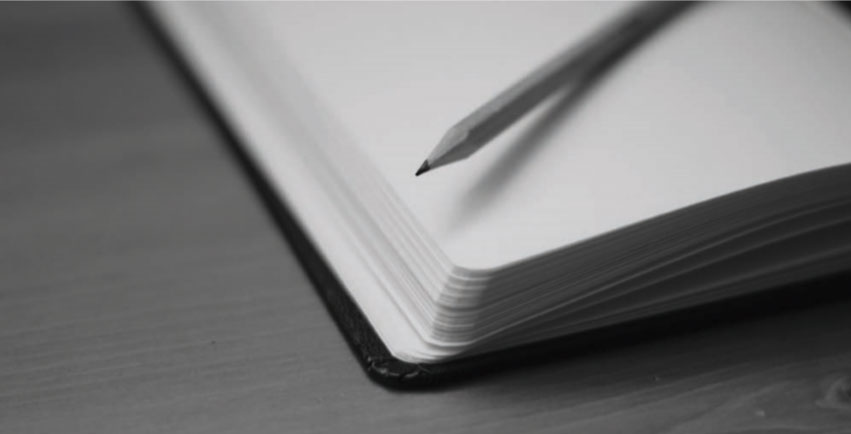
PURPOSE/EFFECTS
A lack of self-compassion is common in our highly competitive society. By learning to treat ourselves with kindness and compassion we can increase our contentment, emotional well-being, resilience, and courage. This exercise is designed to help cultivate and promote self-compassion through writing.
METHOD
Summary
First, write about an aspect of yourself that you judge and dislike. Next, write a letter to yourself from the perspective of a good friend and then read it aloud while practicing taking in the good.
Long Version
Step One
- Choose an aspect of yourself or life that you dislike and criticize. It can be something that makes you feel ashamed, unworthy, inadequate, or self-conscious. Examples may include appearance, career, relationships, health, etc.
- Write in detail about how this perceived inadequacy makes you feel. What thoughts, images, emotions, or stories arise when you think about it?
Step Two
- Now, recall or imagine a friend or family member who is unconditionally loving, accepting, and supportive.
- Imagine that this person knows everything about you, including your background, genes, upbringing, and who you really are as a person. Imagine they know all if the various factors and events that have lead up to your life right now.
- Now write a letter to yourself from that friend about how they view and explain your perceived shortcoming.
- Write from a place of deep kindness, understanding and non-judgmental acceptance.
- Keep in mind that all beings are imperfect, and want to be happy and free from suffering.
Step Three
- After you finish writing, read the letter aloud to yourself and pay attention to how it makes you feel.
- Later read the letter again, practicing taking in the good and experiencing how it feels in your body, heart, and mind.
- Feel the love, compassion, and acceptance that exist within you.
HISTORY
This method was adapted from Kristen Neff’s self-compassion exercise called Exploring Self-Compassion Through Writing. Additional exercises can be found on her website: www.self-compassion.org.
CAUTIONS
Don’t be discouraged if you do not immediately feel compassion for yourself after writing this letter. Self-compassion takes time to develop and you are taking steps to cultivate it by doing this exercise.
SEE ALSO
Self-Compassion Pause Emotional Validation Lovingkindness
EXTERNAL LINKS
Kristin Neff explains self-compassion: https://youtu.be/Tyl6YXp1Y6M
Fare Well
May you and all beings be happy, loving, and wise.


